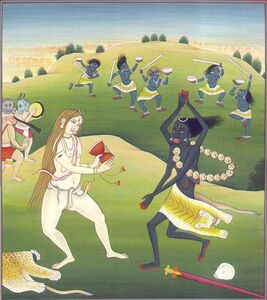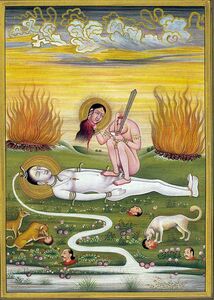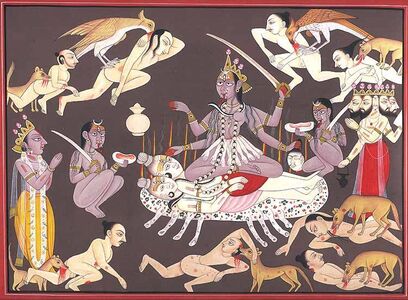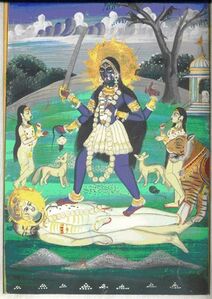




Kālī also known as Kālikā, is the Hindu goddess associated with empowerment, or shakti. She is the fierce aspect of the goddess Durga. The name of Kali means black one and force of time, she is therefore called the Goddess of Time, Change, Power, Creation, Preservation, and Destruction. Her earliest appearance is that of a destroyer principally of evil forces. Various Shakta Hindu cosmologies, as well as Shākta Tantric beliefs, worship her as the ultimate reality or Brahman; and recent devotional movements re-imagine Kāli as a benevolent mother goddess. She is often portrayed standing or dancing on her husband, the god Shiva, who lies calm and prostrate beneath her. Worshipped throughout India but particularly Bengal, and Assam, Kali is both geographically and culturally diverse.
